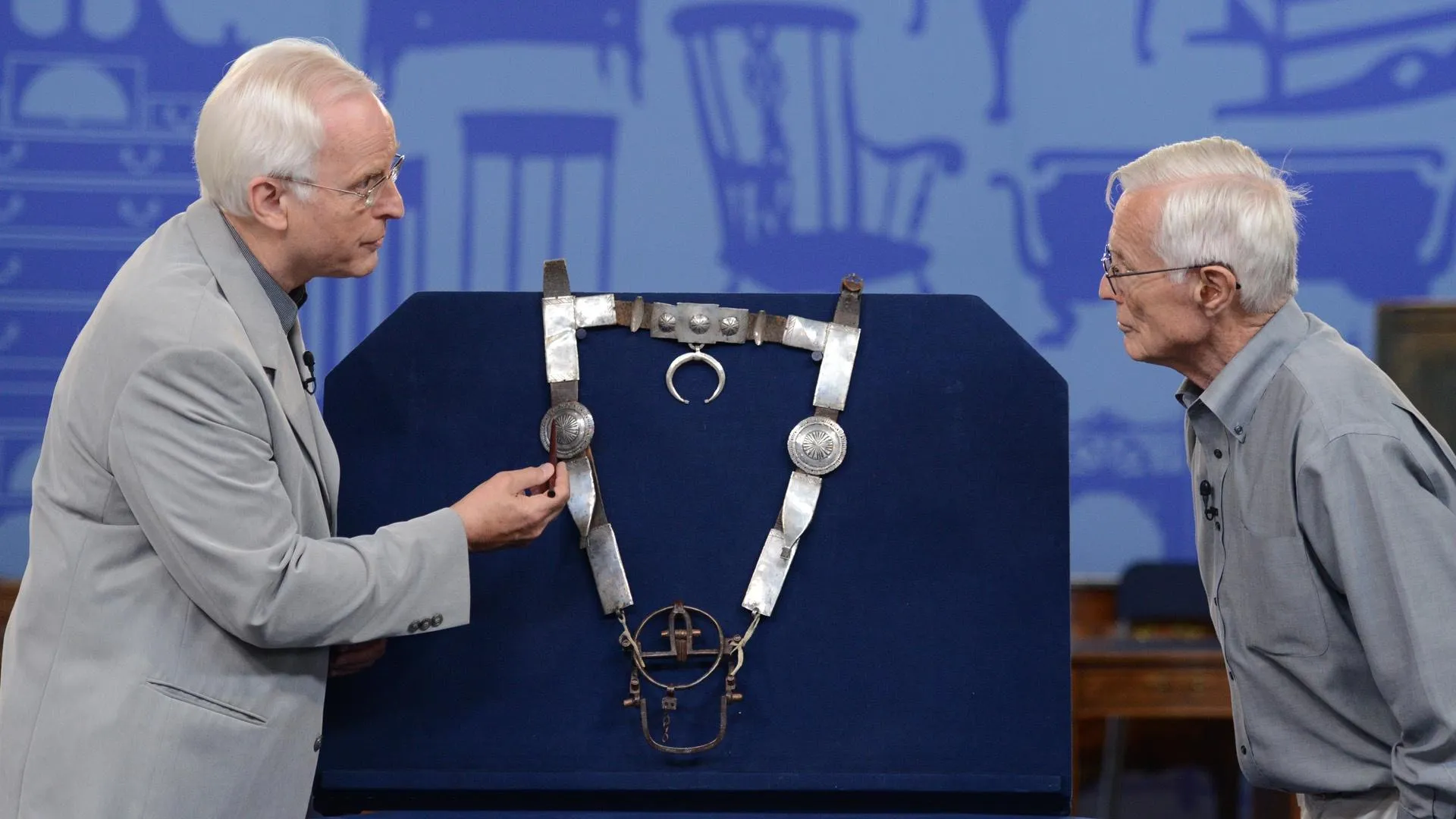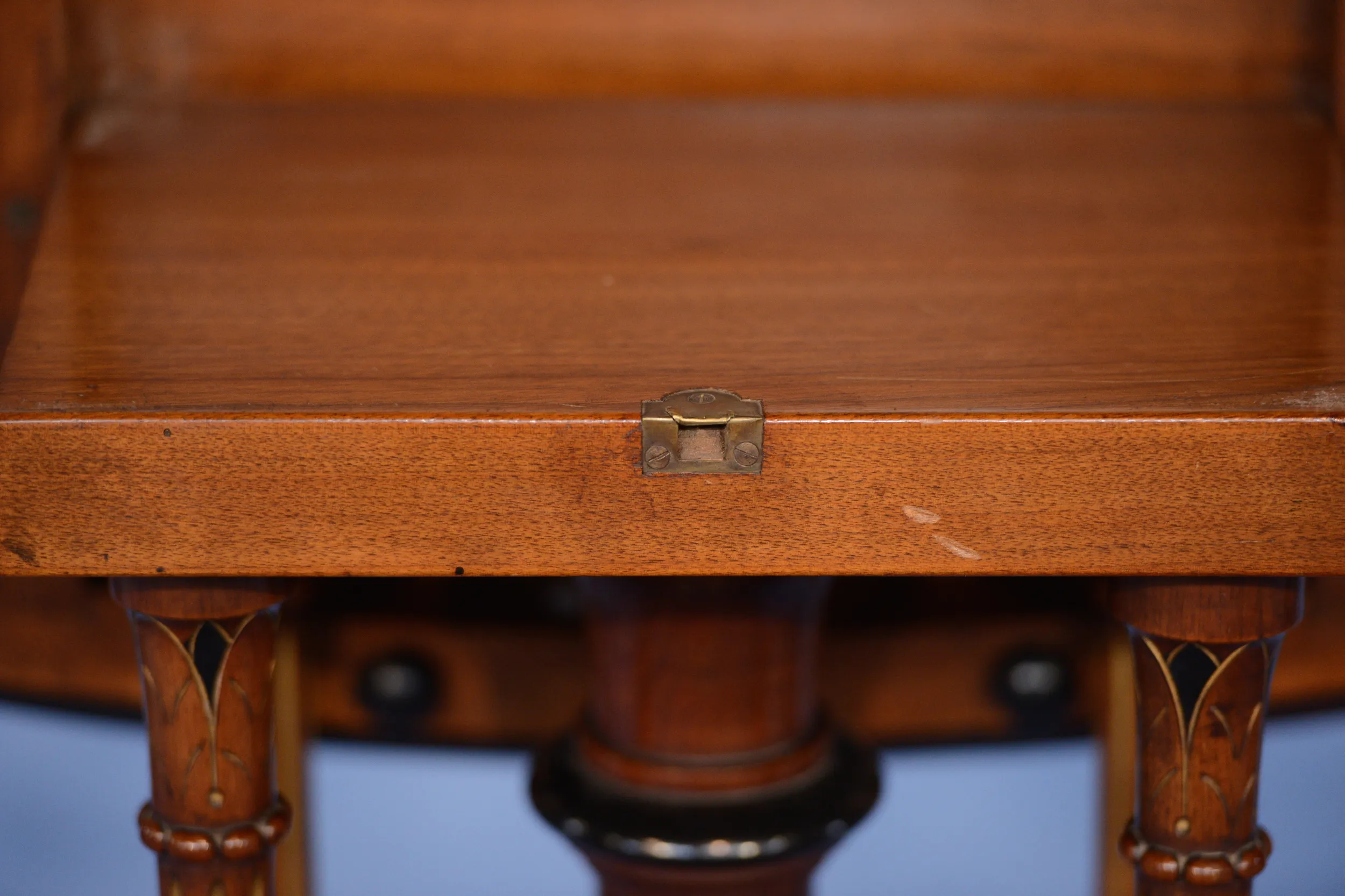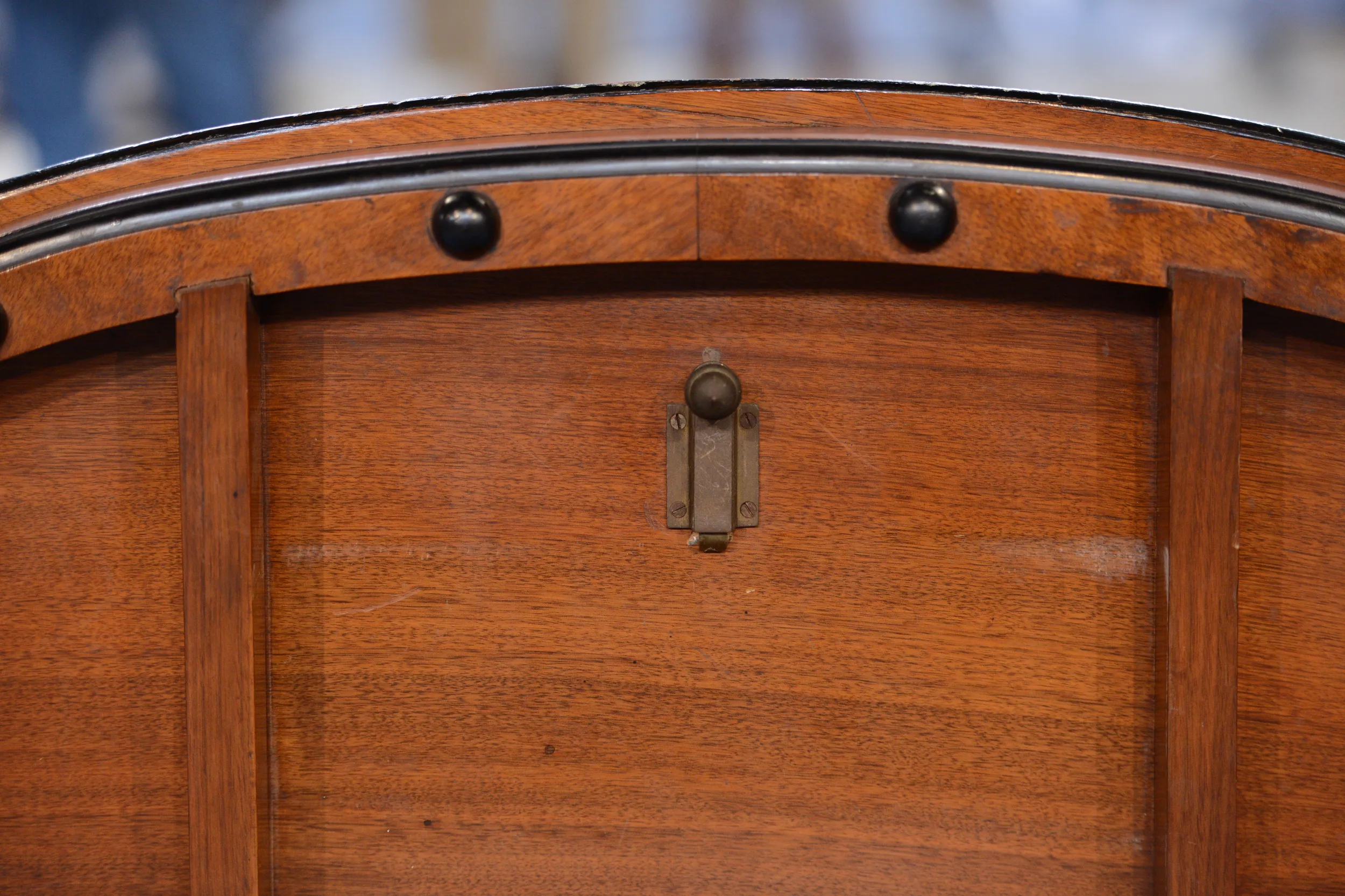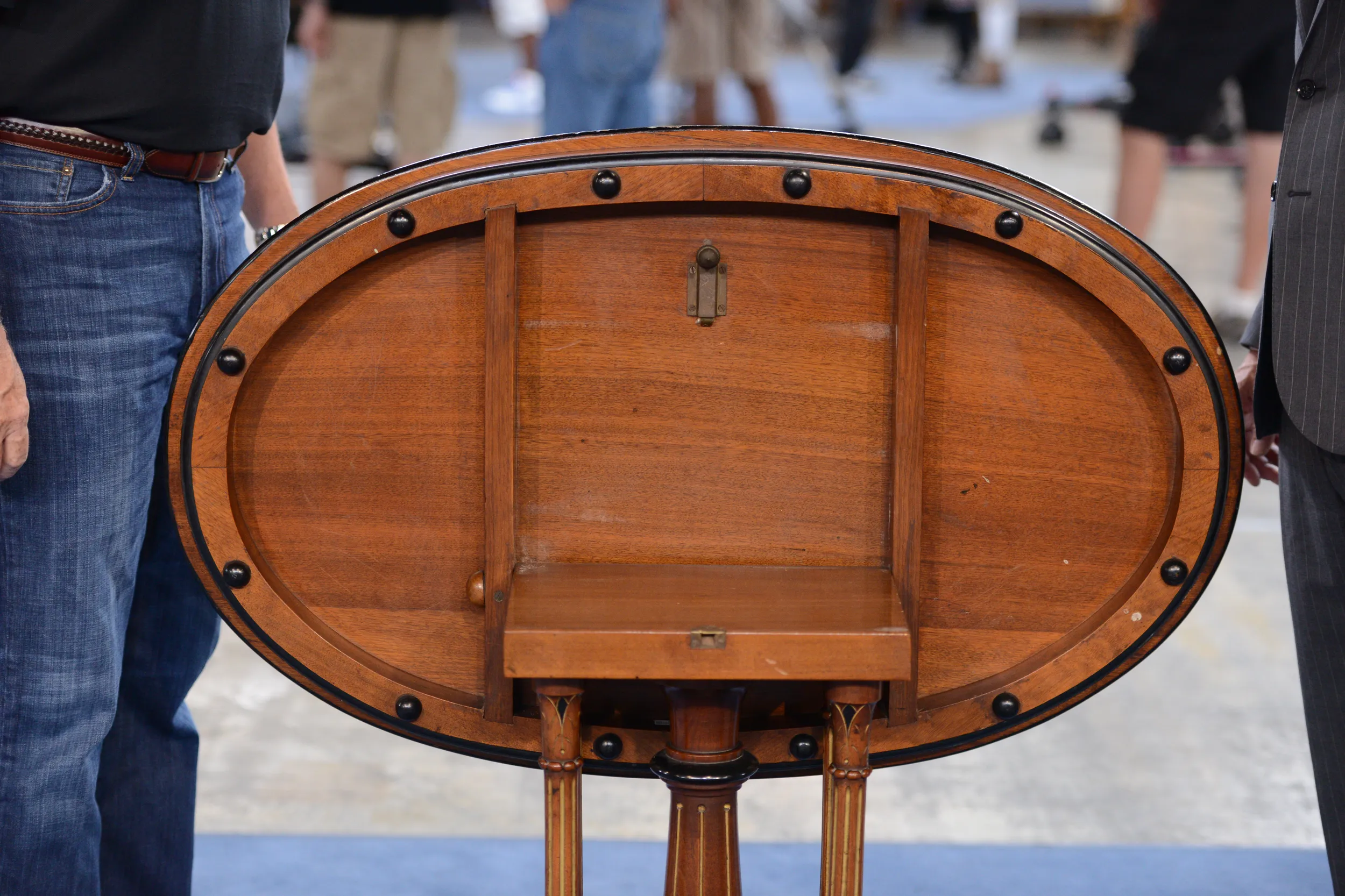GUEST: We inherited it from my mother. She grew up in Philadelphia. She received it from her dad and mother. It was used, we understand, as a fireplace shield. She describes it as being inlaid with 88 different types of wood. We want to find out its origin. We don't know how old it is, where it's from. My mother's been gone about 40 years now, so we really don't have that history and wish I had asked her more questions at the time.
APPRAISER: Yeah. Well, it's always nice when somebody comes in with a story that we can corroborate. We can identify this table as very distinctly Philadelphia, but not only that, I think we can identify who the maker is.
GUEST: Wow.
APPRAISER: Allen & Brother was a very prominent cabinetmaker. And when we say "cabinetmaker," we're meaning one that's making custom furniture in the traditions of Philadelphia, which is historically a great center for furniture making. Allen & Brother was active from roughly around 1830 right up to around the turn of the century. And their work is distinct. One of the things that distinguishes them is their use of ebonized detail and gilt incising. So here, we see the gilt-incised columns all on a very fine walnut base. The paw feet, again, is a Philadelphia tradition that Allen & Brothers carries on through the 19th century, and it's distinct to their furniture. And as we move up the table, we find this great top. Now, you identify this as a fireside piece, which I assume is based on the fact that this tilt top comes up.
GUEST: Right.
APPRAISER: I'm not sure that I would agree with that. I think the purpose of this table is to display this work of art, which it's almost like a painting. I also think the heat would cause a problem for the table. Marquetry is a thin layer that's inlaid. These woods are dyed, but it's a very complex process that heat would definitely lift this. And as you can see, we do have some lifting problems. That is normal with a table of this age, which would date from around 1870s.
GUEST: Okay.
APPRAISER: Okay, right after the Civil War, Allen & Brothers is at the height of their career. They were known for having great craftsmen, expert carving. The marquetry top is something that a lot of companies would import from Europe. This is not. This is something that would have been done in-house. The value on these is not as strong as it was ten years ago. So the 2014 price that I would put on this is $2,000 to $4,000 at auction. Had it been ten years earlier, we would probably be looking at $4,000 to $6,000.
GUEST: $4,000 to $6,000. Well, thank you. We wouldn't want to sell it anyway.














